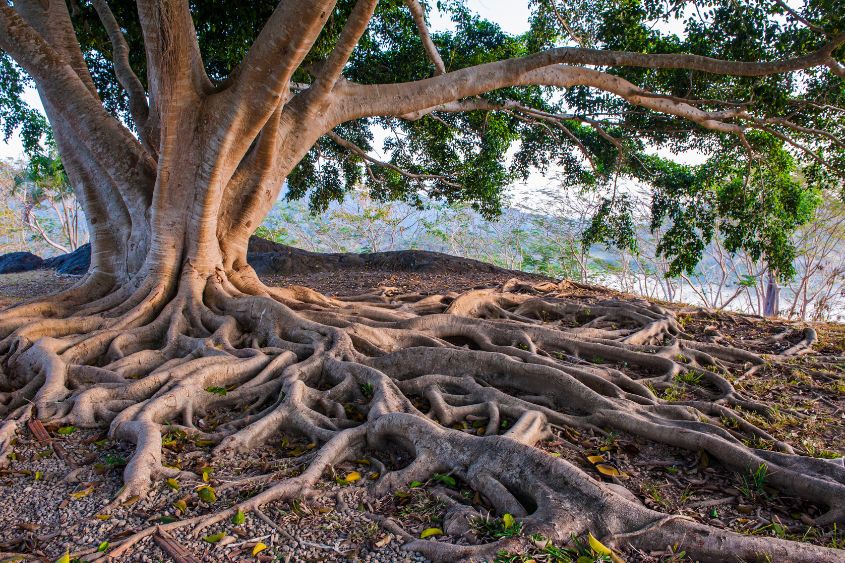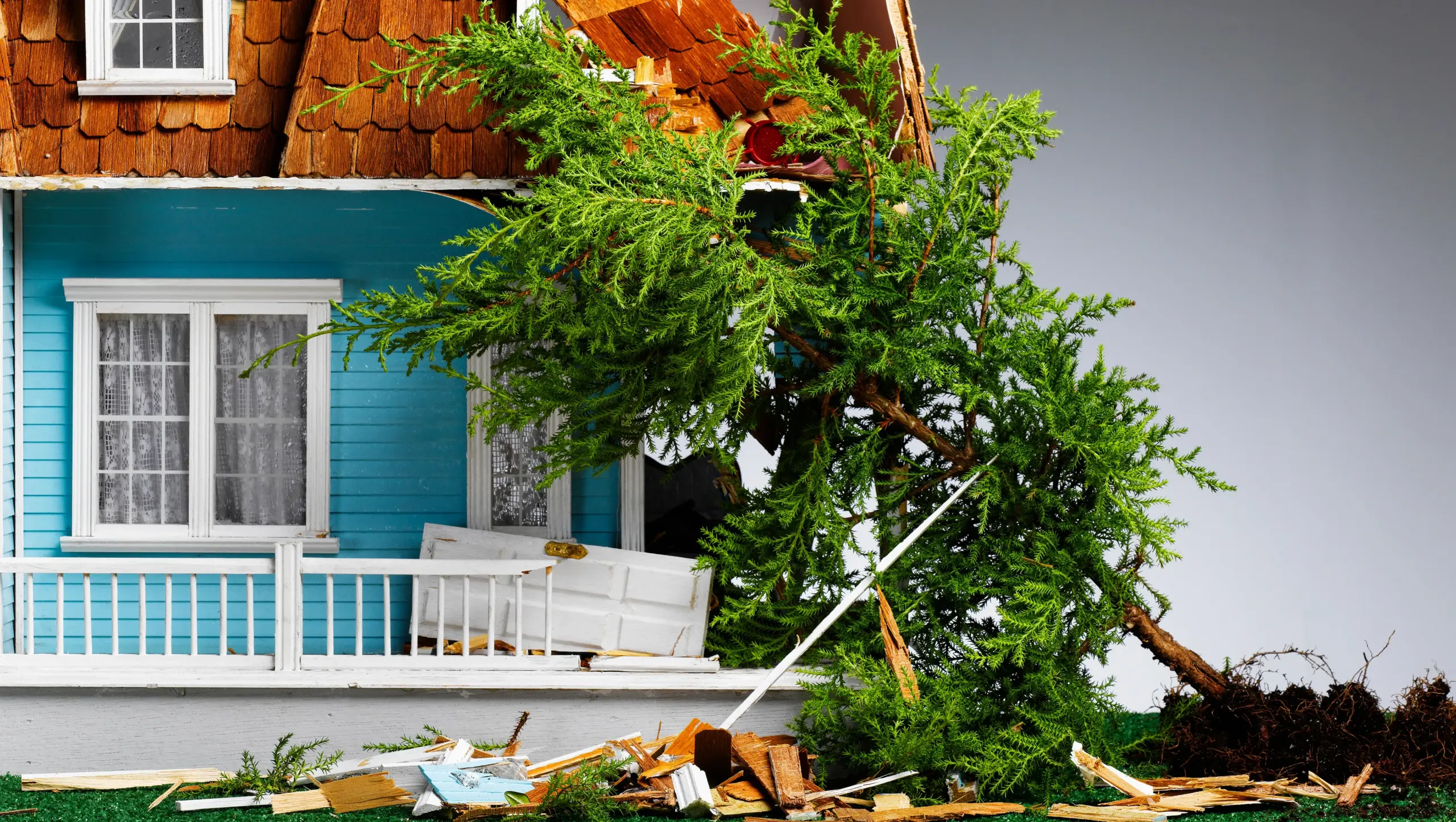You look out your window and see a massive oak leaning across the fence line. It’s shading your yard, dropping leaves, and maybe even cracking your driveway.
Now comes the big question: who handles the removal bill?
Tree ownership and responsibility can get tricky, especially when property lines are involved. This guide breaks down what Virginia law says, what’s considered fair, and when calling a tree removal service like Timber Brute is the smart move.
Who Is Responsible for Tree Removal on Your Property Line?
If a tree sits right on your property line, both neighbours usually share ownership and must agree before removing it. If it’s entirely on one side, that property owner is responsible for maintenance and removal costs.
Key Takeaways
- Property line trees are often shared — both owners may need to agree on removal.
- In Virginia, you can trim branches or roots that cross your property, but not damage the tree.
- Liability for fallen trees depends on negligence, not just location.
- A property survey and arborist report help settle disputes fairly.
- Timber Brute offers safe, insured, and professional tree removal in Richmond.
What the Law Says in Virginia and Richmond
In Virginia, tree ownership comes down to location. If the trunk stands entirely on your land, it’s yours — and so is the responsibility. But when it straddles the property line, it becomes a boundary tree, shared by both neighbours.
You can’t remove or damage a shared tree without your neighbour’s consent. Doing so can violate Virginia Code § 18.2-140, which prohibits cutting trees on another’s land without permission.
You do, however, have self-help rights. You can trim branches or roots that cross into your property — as long as you don’t harm the tree itself.
A 2008 Virginia Supreme Court case, Fancher v. Fagella, confirmed that property owners can act when a neighbour’s tree causes actual or imminent harm, such as root damage or structural risk.
The bottom line: location and evidence of damage determine who’s responsible.
When a Tree Sits Exactly on the Property Line

A tree growing directly on the boundary is considered jointly owned. That means both parties must agree before any removal, trimming, or major pruning happens.
If one neighbour removes it without consent, they could be liable for damages — even if they believe they’re protecting their property.
In most cases, neighbours agree to share removal costs. If the tree poses a danger, like leaning toward a home or utility line, it’s often easier to split the bill than fight over it later.
When in doubt, get the boundary surveyed before taking action.
Encroaching Branches or Roots: Your Rights
Branches hanging over your yard or roots creeping under your driveway can be frustrating. Fortunately, Virginia allows you to trim encroaching limbs or roots that cross the property line — up to the boundary.
However, the trimming must not harm the tree’s health. Cutting too deeply or destabilising it could make you liable for damage. Experts recommend hiring a tree service with an experienced arborist to handle it safely and legally.
Before cutting, take photos, note where the property line lies, and inform your neighbour. Clear communication avoids conflict and potential claims.
Fallen Trees and Damage: Who Pays?
When storms hit Richmond, downed trees aren’t uncommon. But who pays for the cleanup and repairs depends on the cause.
If a healthy tree falls due to wind or lightning — an “Act of God” — the owner isn’t typically responsible for damage to the neighbour’s property. Each homeowner files a claim with their own insurance.
But if the tree was clearly dead, rotting, or neglected, and the owner ignored warnings, they could be held liable for damages.
Virginia law recognises negligence when a property owner fails to maintain a dangerous tree that causes foreseeable harm.
So, if your neighbour knew the tree was dying and did nothing, you may have grounds to seek compensation.
How to Determine Responsibility (Survey, Evidence, Arborist)
Before you call anyone with a chainsaw, confirm where the tree actually stands.
A licensed surveyor can mark your property boundaries accurately — critical evidence in disputes. Next, a certified arborist can assess the tree’s condition and whether it poses a safety risk.
Together, those reports form your best defence if disagreements escalate. Document everything: photos, dates, conversations, and expert opinions. That paper trail keeps you protected legally.
Steps to Resolve Disputes
- Start friendly. Talk to your neighbour first. Most conflicts end with a simple chat.
- Put it in writing. Summarise your concern, add photos, and request cooperation.
- Get expert input. A survey or arborist report clarifies facts before emotions take over.
- Offer solutions. Suggest sharing the removal cost or trimming overhanging parts only.
- Mediation or legal help. If talks fail, mediation is cheaper than court. As a last resort, seek a property lawyer familiar with Virginia tree law.
Resolving disputes early saves both money and neighbourly goodwill.
When to Hire a Tree Removal Service (Timber Brute)
Tree removal near property lines isn’t a DIY project. It involves risk, heavy equipment, and liability if anything goes wrong.
That’s where professionals like Timber Brute come in. As a local tree removal service in Richmond, Timber Brute handles complex removals safely, with full insurance and experience in property boundary work.
Hire experts when:
- The tree is tall, leaning, or near a structure.
- You’re unsure whose property it’s on.
- You suspect rot or disease.
- You want peace of mind knowing the job meets local regulations.
A quick site inspection from Timber Brute can prevent costly legal or property headaches.
Frequently Asked Questions
1. Can I force my neighbour to remove their tree?
Only if it poses a clear danger or causes actual damage. Otherwise, you can trim branches up to your property line.
2. Who is liable if a tree falls during a storm?
If it were healthy, no one would be at fault. Each homeowner’s insurance covers their own damage.
3. Can I cut my neighbour’s tree roots?
Yes, up to your property line — but don’t destabilise or kill the tree. Always get expert advice first.
4. What if the tree is dead or unsafe?
Document it and notify your neighbour in writing. If ignored, you can hold them liable if it causes harm.
5. Do I need a permit in Richmond for tree removal?
Private property trees generally don’t need permits, but protected or street trees might. Check with Richmond City’s Urban Forestry Division before removal.
Conclusion
Tree disputes can get complicated fast — especially when ownership and responsibility blur along the fence line. Understanding Virginia’s laws and documenting everything helps you make smart, legal moves.
And when it’s time for action, trust Timber Brute to handle the heavy lifting. Their team provides safe, insured, and efficient tree removal across Richmond, giving homeowners clarity and peace of mind.Contact Timber Brute today to schedule a free estimate or inspection.

